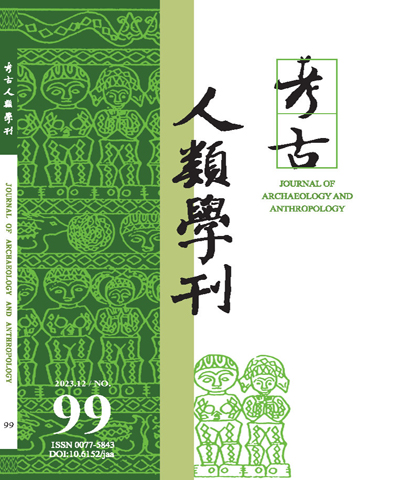
考古人類學刊/Journal of Archaeology and Anthropology
考古人類學刊編輯委員會,正常發行
選擇卷期
- 期刊
斑駁鏽蝕的工業設施與綠意盎然的盆栽矮樹之並置,構築了前高雄煉油廠周 邊饒富興味的盆栽景觀。本文從Tim Ingold提出的「寓居視角」來檢視後勁盆栽園裡的生命境況,分析人與樹如何可能在受到工業嚴重干擾的失調環境中寓居與共生。「符應」(correspondence)是本文的關鍵概念,用來描述人與樹的親近性,以及盆栽與工業環境的共存。本研究有三項主要發現,首先,盆栽農在長期養樹的過程中,藉由修剪塑型等等身體動作,以及樹(包括樹皮、樹枝、樹葉等)的觸感給予的回應,與樹共同造就了盆栽。第二,在盆栽園中,由於樹需要密集澆灌與修剪,以及其固著一地的特性,召喚人每日定時至園中勞動,從而打造了一個符應樹之日常需求的共同寓居場所,園中盆栽之可視狀態,替代了言語而成為符應照顧之人生活狀態的具體線索。第三,我從區域的經濟與地景變遷來理解盆栽園出現於此地的緣由,並由此詮釋盆栽形貌與工業都市的符應。人、樹、社群的生命共振,構築了工業設施隙縫中的生機世界。
- 期刊
近幾年我在新竹沿山甚至靠近市區的田野中經常發現老鷹蹤影,也聽到不同人提及他們的遭遇經驗,我的種菜老師阿伯樂將老鷹的回來歸因於有機與友善耕作風潮。雖然官方統計有機耕作田地面積僅約全國農地1%,加上各地自主的生態友善田地,應該也不會超過2%,但是這2%的另類農耕正在產生可觀的變化。新竹近年區域發展雖然讓市容熱絡,但各類汙染公害或生態破壞事件層出不窮,在這樣的條件下,到底鷹兒是怎麼回來的?本文檢視讓老鷹回來的一個另類世界形成,我稱為「有機共和國」。新竹區域因為1980年成立的新竹科學工業園區以及1993年提出的科學城計畫,造成都市紋理的蔓延,同時也產生許多重點不同但同樣強調反污染、護生態、保荒野與救田地的論述與行動。本文會說明一個具本體反思性的都市自然概念,如何帶領我們探索這個世界裡的各類行動者及其關連。
- 期刊
隨著臺鹽公司於2002年結束臺灣的日晒海鹽生產,臺灣西南部沿岸曾面對「無鹽的結局」。但是,經過部分人士進行復晒及產品行銷,近年臺灣日晒鹽重新出現在市場之中。本研究透過物質文化及後人類主義的分析框架,探討復晒日晒鹽所影響的文化分類及社會網絡。本文先描述臺17線沿路鹽田的濕地化及文資化,說明鹽業的沒落、環境保護活動的興起及文化資產保存等背景因素,如何導致鹽田地景及其意義有所改變。然後,筆者利用布袋鎮洲南鹽場的案例,探討行動者在推動鹽業文化時面對的困境與解決問題的過程,以及他們所建構的鹽巴分類方式。藉著記錄人與藻互動下產生的新鹽花分類,以及人的風土感官經驗進行產品行銷,筆者將討論鹽巴如何成為美食料理的「最佳配角」和串連美食網絡的非人行動者。
- 期刊
The presentation and historical interpretation of the events of post-Sukarno 1965 are often shrouded in fear and silence. Despite the efforts of NGOs, human rights groups and academics, attempts at reinterpretation or revising Indonesia's past have often met with fierce opposition. Groups which are religiously- or militarily-affiliated often brand any such attempt at revising the history of 1965 as being a conspiracy to raise the flag of communism on Indonesia's soil. Fringe groups such as the Front Pembela Islam (Islamic Defenders Front) and the Front Anti Komunis Indonesia (Anti-Communist Front) have been at the forefront of violently disruptive actions against exhibitions, movie screenings, or even discussions about that specific period. These groups often brand revisionist retellings of 1965 as arising from an ethereal bahaya laten (latent danger) or komunisme gaya baru (new-style communism). This discourse bears an uncanny resemblance to the Orde Baru (New Order) regime's paranoiac fears of organisasi tanpa bentuk (formless organisations) subverting the state from within. Using opaque language and taking advantage of a "ghostly lexicon" that have already existed within Indonesia, the New Order regime was able to create an atmosphere of fear and foreboding. Nonetheless, despite the overthrow of Suharto's New Order regime, Indonesia continues to live amongst the shadows and phantasms which have yet to be exorcised even after nearly 20 years of democratic transition. This paper investigates the ghostly phenomena arising from the taboo-like nature of the events of 1965. I will specifically look at how spaces of past violence have been transformed into informal memorials testifying to Indonesia's "silenced past." I will also be investigating rumors and ghost stories hypothesizing that these elements represent a way in which the past expresses itself even as fringe factions and groups continue to maintain an "enforced silence" on the events of 1965. Through the investigation of these events and by presenting them as symbolic tropes, we can gain a deeper understanding of how nations and societies reconcile with their pasts in transitional contexts.

